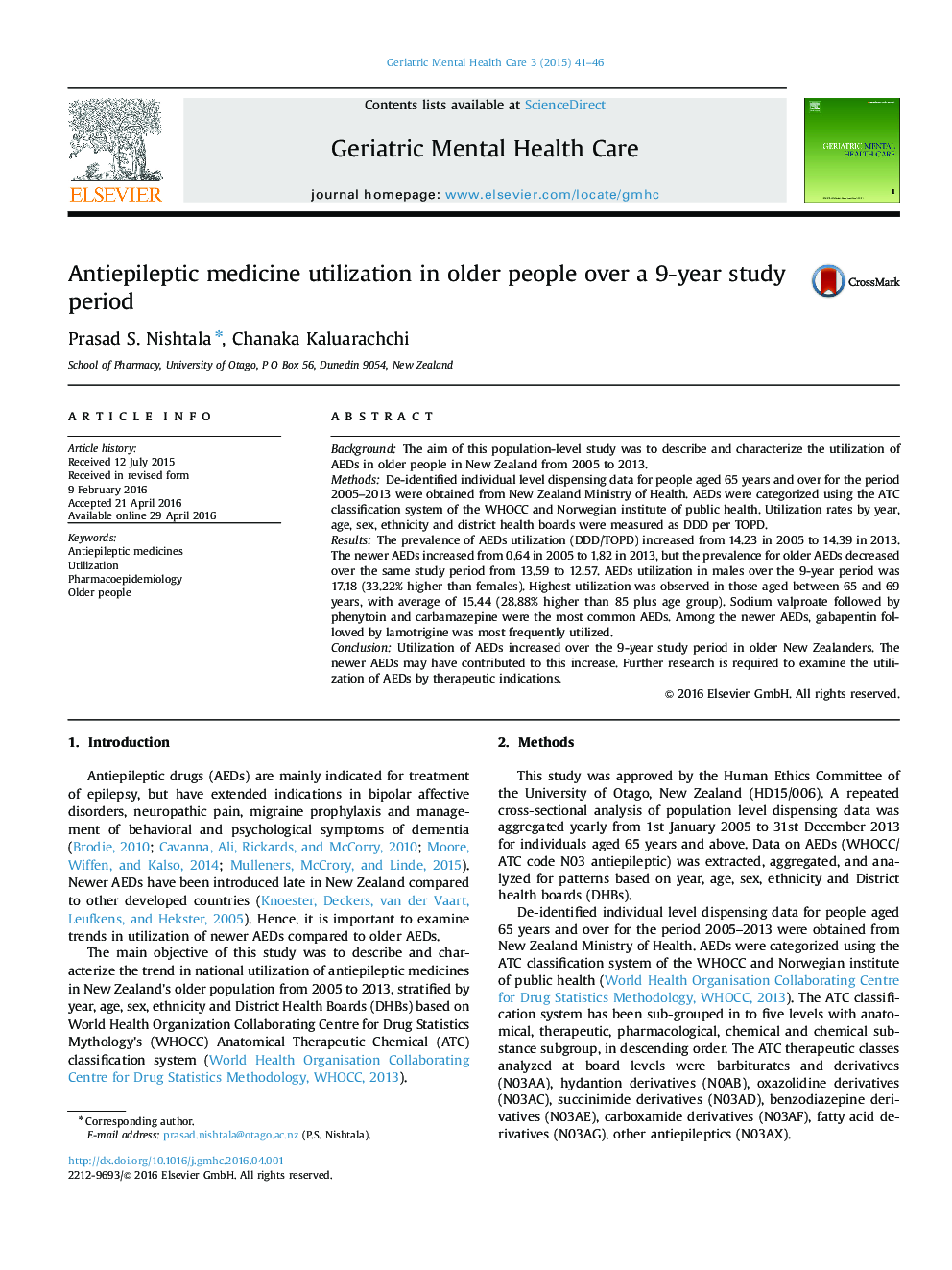| Article ID | Journal | Published Year | Pages | File Type |
|---|---|---|---|---|
| 909164 | Geriatric Mental Health Care | 2015 | 6 Pages |
BackgroundThe aim of this population-level study was to describe and characterize the utilization of AEDs in older people in New Zealand from 2005 to 2013.MethodsDe-identified individual level dispensing data for people aged 65 years and over for the period 2005–2013 were obtained from New Zealand Ministry of Health. AEDs were categorized using the ATC classification system of the WHOCC and Norwegian institute of public health. Utilization rates by year, age, sex, ethnicity and district health boards were measured as DDD per TOPD.ResultsThe prevalence of AEDs utilization (DDD/TOPD) increased from 14.23 in 2005 to 14.39 in 2013. The newer AEDs increased from 0.64 in 2005 to 1.82 in 2013, but the prevalence for older AEDs decreased over the same study period from 13.59 to 12.57. AEDs utilization in males over the 9-year period was 17.18 (33.22% higher than females). Highest utilization was observed in those aged between 65 and 69 years, with average of 15.44 (28.88% higher than 85 plus age group). Sodium valproate followed by phenytoin and carbamazepine were the most common AEDs. Among the newer AEDs, gabapentin followed by lamotrigine was most frequently utilized.ConclusionUtilization of AEDs increased over the 9-year study period in older New Zealanders. The newer AEDs may have contributed to this increase. Further research is required to examine the utilization of AEDs by therapeutic indications.
